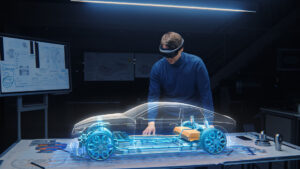Every industry seems to be using animation, CGI, or immersive imagery in some form or another these days. We want to take a look at sports and share how this sector is using technology. Is there a place for VR, AR, or CGI in professional sports?
In recent years, soccer has incorporated VAR or Video-Assistant-Referee. While this isn’t animation, it uses machine-based technology to show the precise location of the player’s position to follow the game’s rules. And now, over the past year, we have started to see more technology in sports.
The pandemic caused the cancellation of many events where people gather, but everyone still wants to feel a bit of “normalcy,” so to speak. So, virtual simulations of various kinds are growing in use. For example, pre-recorded audio helps viewers get the complete feel of the game for television played sports. The audio is adjusted in real-time to go with the flow of the game.
As things continue to progress and change, stadiums are using CGI technology to create virtual crowds. As a result, players feel less alone in the stadium with CGI fans. Of course, this doesn’t compare to true fans being in the seats, but it removes some of the emptiness felt when no one is present.
Other sports are bringing virtual reality to the forefront of the game. A few sports currently testing these technologies and working to improve them are:
- The National Basketball Association is trying courtside seating with VR.
- Major League Baseball is enhancing its stats for more augmented reality features.
- The National Hockey League and Major League Soccer are both improving their VR and AR features.
- Several notable NFL teams and college footballs have begun incorporating VR programs into their training practices.
- NASCAR racers can strap on a VR headset and train with such incredible technology that the difference between virtual reality and real-world is hard to tell apart.
- Soccer is beginning to use VR for athlete training and give fans a behind-the-scenes view of the players in training.







